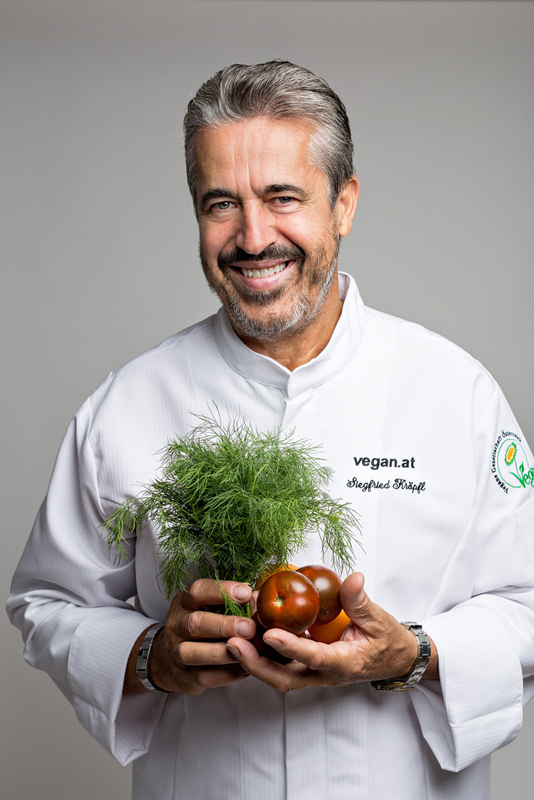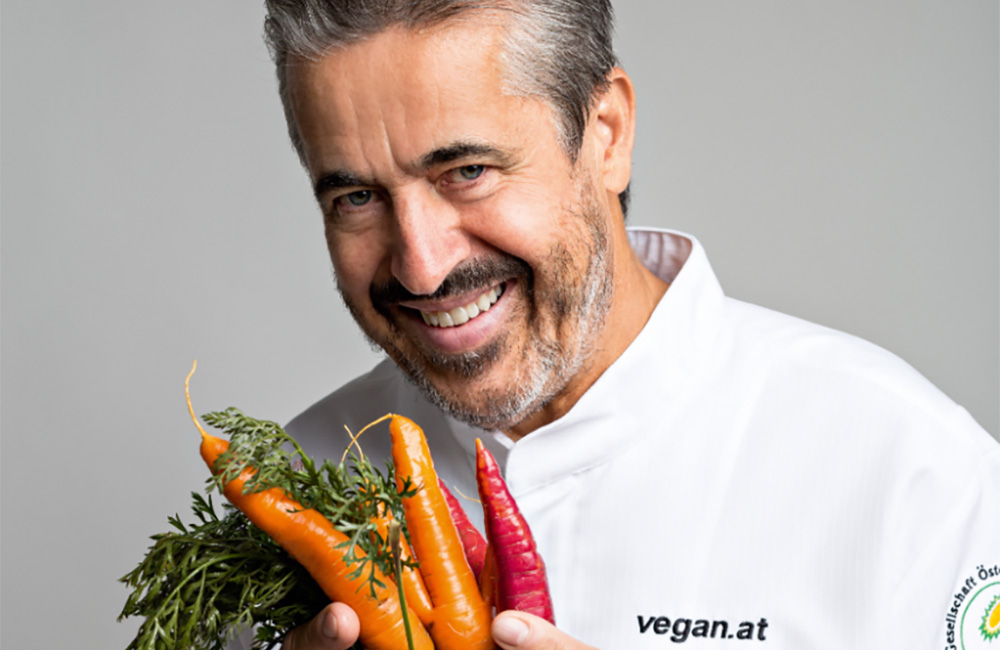Siegfried Kröpfl is Austria’s only vegan gourmet chef, teacher and restaurant consultant focussing on vegan cuisine. He works together with the Vegan Association Austria and worked as executive-chef for various high class hotels and restaurants in Vienna, among others for Tiergarten Schönbrunn, Restaurant Kuchlmasterei im 3. Bezirk, Hotel Bristol and Hotel Melia. For him, vegan cuisine not only means to cook without animal products, but also to develop more awareness for local, organic and sustainable food production.
Mr. Kröpfl, how did you discover vegan cuisine?
SK: I have been a vegan and Austria’s only vegan gourmet chef for the last seven years. A decisive factor was our daughter Melanie’s dissertation on the subject of veganism. Our daughter has been a vegetarian for nine years now and a vegan for the last eight. Her research on factory farming convinced me to follow suit.
What benefits and/or challenges does vegan cooking offer you as a chef?
SK: In my view, vegan cuisine offers only advantages. Ultimately you are forced to think about what ingredients you can use and where they come from. The issues of organic cultivation, regional production and sustainability are on everyone’s lips, but it is important to do something about them too. There are so many fantastic products in Austria – we ought to refocus on those. We can be proud of our farmers, who work all year round to produce fresh fruit and vegetables, herbs, salads and wine. For me, vegan cuisine also means engaging with my environment and surroundings and integrating these products into my cooking.

“Yeast extract makes a huge contribution to creating a good taste and rounds the dish off.”
Do you use a lot of yeast extract in your cooking? What taste and/or textual opportunities does yeast extract offer you when you create vegan recipes?
SK: There are many dishes, particularly pasta dishes and risottos, in which I like to use yeast extract. Yeast extract makes a huge contribution to creating a good taste and rounds the dish off. I also like to use it when preparing pestos. The ingredient is as easy to use as any other sort of seasoning.
To what extent does the discovery of umami enrich the world’s cuisines?
SK: Most people don’t really know what “umami” actually means. It is the fifth taste and is described as “savoury”. In fact, knowing this isn’t all that important. We just need to have a little courage when we are experimenting with cooking new dishes. If the dish is meant to be savoury, this taste can be found in certain mushrooms and other vegetables. Yeast extract is great to use for this purpose too as it supports and rounds off the taste.
Yeast extract has long been a popular ingredient in other countries such as the UK and Australia. It is now gradually appearing on supermarket shelves in the German-speaking world too. Is there a trend emerging here?
SK: Yes. But it will take some time to develop. Just because yeast extract is more readily available in shops does not mean that people know what yeast extract actually is. That’s why in my seminars I always talk a lot about individual products and often about new products too. It’s only when people know about an ingredient that they use it in their cooking. Rome wasn’t built in a day.
For more information about Siegfried Kröpfl, visit siegfriedkroepfl.com




